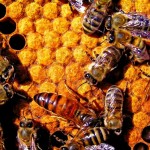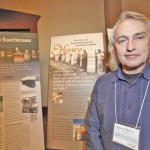
Tag Archives Bees

Surprisingly few ‘busy bees’ make global crops grow
Conservation of wild pollinators can’t be based on economics alone

Tiny number of bees account for most crop pollination, study finds

Growing a 4-H garden you can ‘Bee Proud’ of
4-H clubs can get free seeds to plant pollinator-friendly gardens

Health Canada continues to assess neonic herbicides
There is debate over how much damage would be incurred by corn and soybean producers if neonics are banned

Neonics are in the picture, but they’re not the whole picture
The varroa mite is still the top concern for beekeepers, in the eyes of one expert, but other factors can’t be ignored either
Ontario’s curbs on neonics may protect bees but diminish crops

Bee foraging chronically impaired by pesticide exposure
Another study sheds light on why neonicotinoids and bees don’t mix

NFU sees moratorium on neonicotinoids
The Senate committee is studying the importance of bees to food production in Canada

Environmental groups challenge PMRA over neonicotinoid approval
Conditional registration has been granted despite the objections

How sweet it is: Honey Co-op turns 75
From processing honey in a Victorian warehouse in downtown Winnipeg, to marketing worldwide, Manitoba’s honey co-operative has grown into an international business
It may have been 75 years ago, but Edwin Hofer still remembers the excitement of delivering honey to the then newly formed honey co-operative at its imposing Bannatyne Avenue processing facility. “I would go into the old plant with my dad on Bannatyne… we took the honey in pails at that time, there was no

